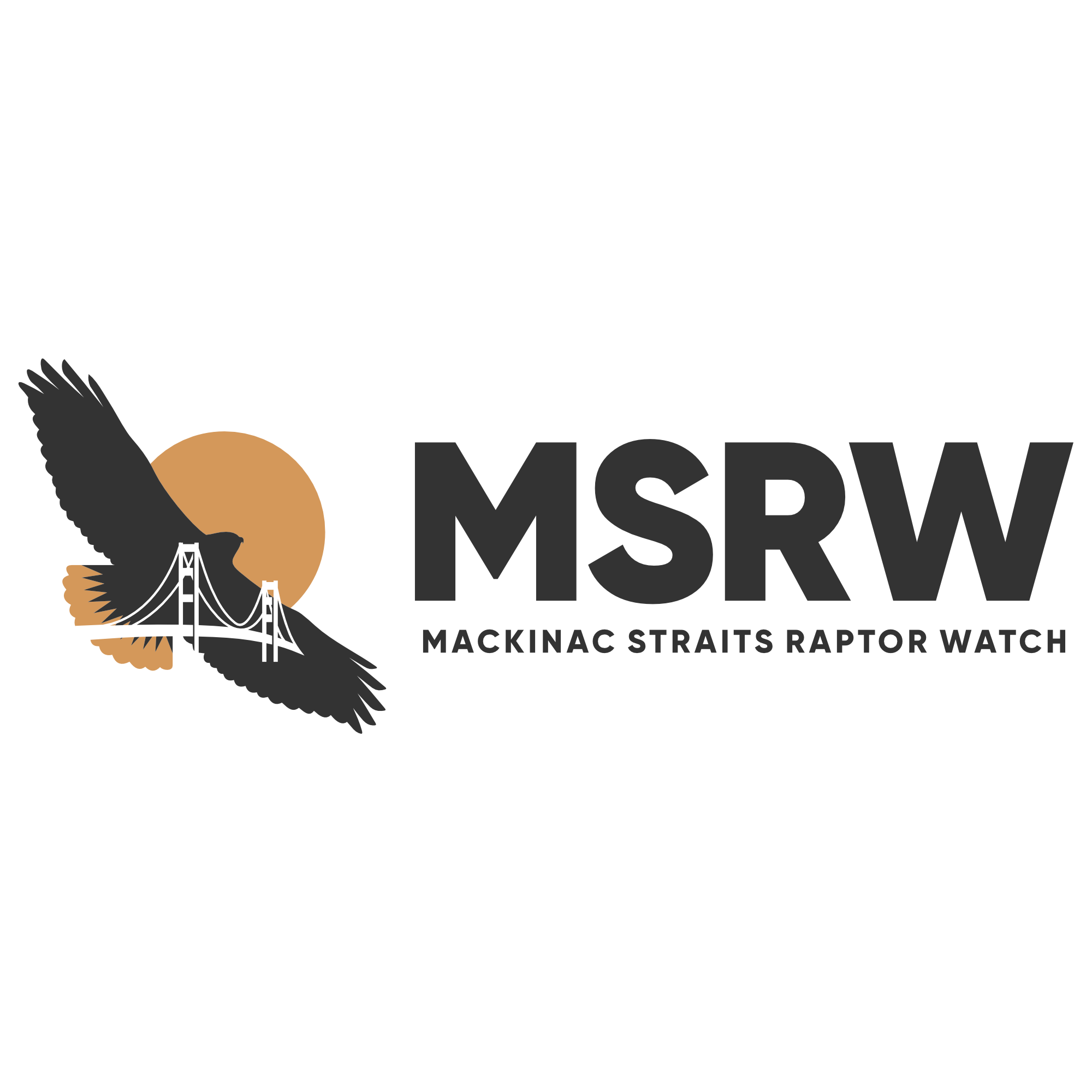Good morning MSRW readers! We have completed the third week of banding in our 2025 spring season, with great success. We caught twenty-four NSWO, four of which were recaptures from previous nights and previous seasons. This brings us up to ninety-eight so far! Two of our new arrivals were originally banded by the folks at the Whitefish Point banding station. We also caught our second Long-eared Owl of the season, on our last net check of the morning, April fifth.
The debilitating ice storm that ravaged the Cheboygan area at the beginning of this week halted our process significantly; we had to take four evenings off to wait for the precipitation to abate and for the ice to melt from our nets. Our biggest concern was downed tree limbs falling on our nets, but despite the general carnage, they were unharmed. In an attempt to continue working, we broke down our encrusted NSWO nets and hung them in our field station to dry out in front of the fire. Although it worked marvelously, our cabin did resemble a Tolkienien spiders web.
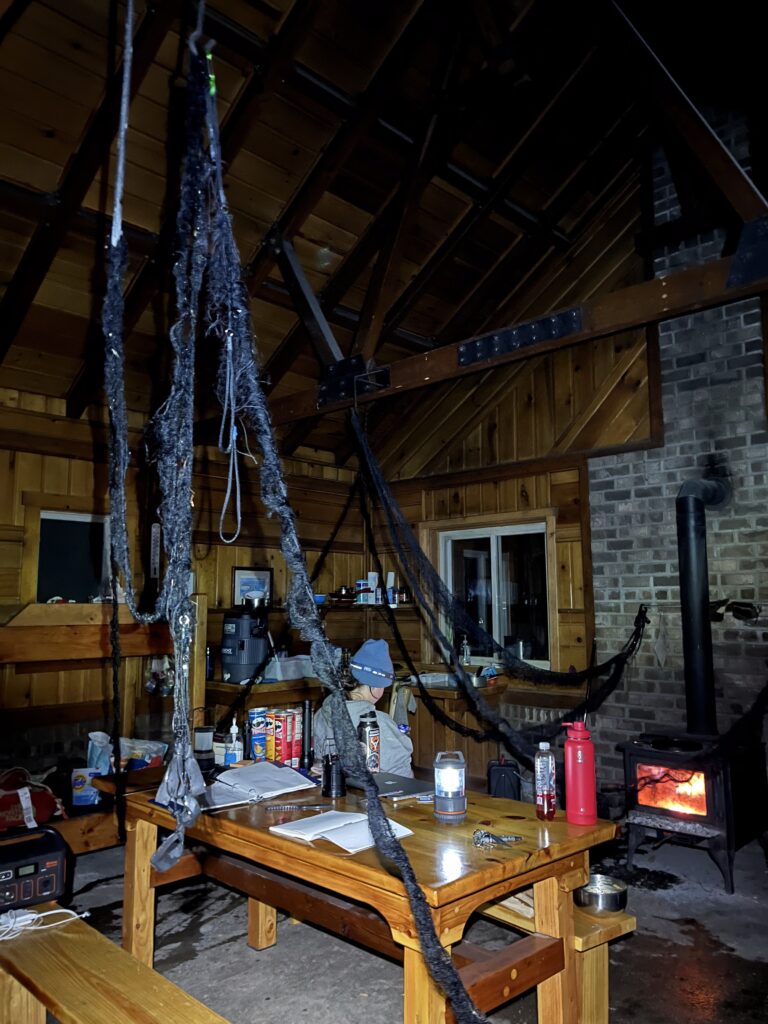
Despite our normally humble circumstances, our sources outside the park told us we were far better off than those living in civilization. We had a wood-stove, plenty of fuel, batteries and lanterns, and totes of shelf-stable foods. The ice storm knocked out the power and closed shops in Cheboygan, making us the most unintentionally well-prepared inhabitants in miles.
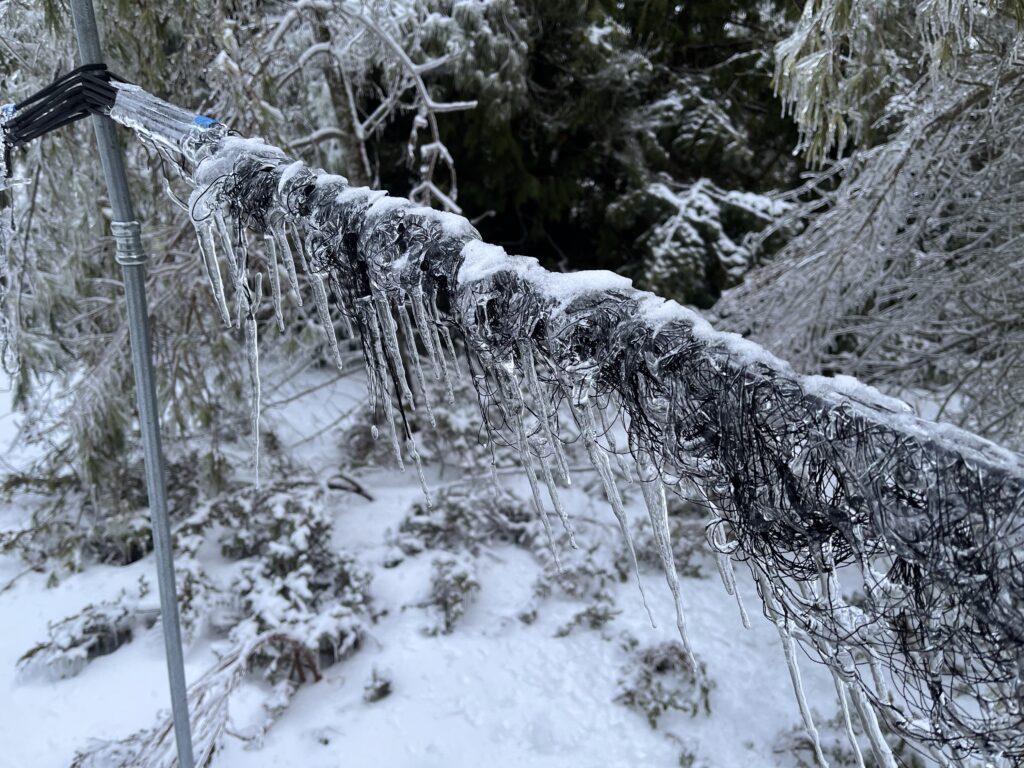
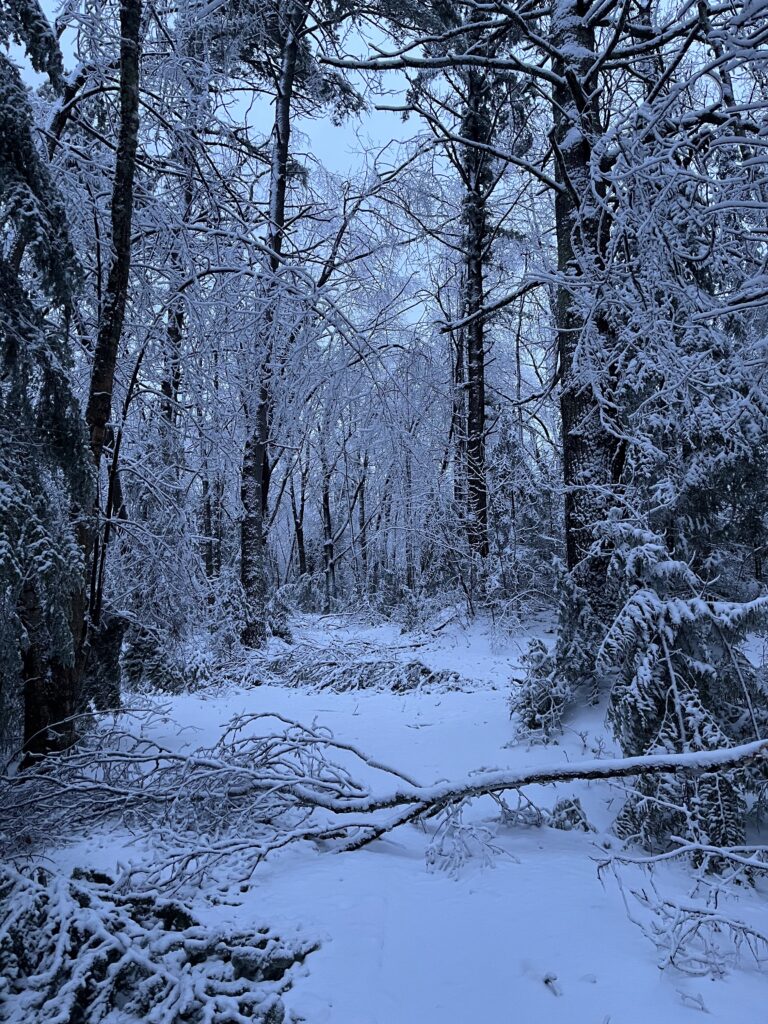
The majority of the birds we captured this week are second year birds, which means that they hatched in the summer of 2024. We age NSWO by examining the amount of a fluorescent compound called porphyrin on the underside of their primary and secondary flight feathers. Porphyrins are a pigment that are found in some species of bird, like bustards, pigeons, owls, and grouse, among others. In Northern Saw-whets, these pigments appear bright pink. Porphyrins degrade in the sunlight, which make them particularly useful for aging nocturnal species like owls, because we can determine how old a feather is by how much the feather fluoresces. The greater the photo-degradation, the older the feather, and the paler it appears. Newer feathers appear a much brighter pink when examined under a blacklight. These birds molt their flight feathers in specific and recognizable patterns at different times in their life, allowing us to estimate how old they are by the different generations of remiges.
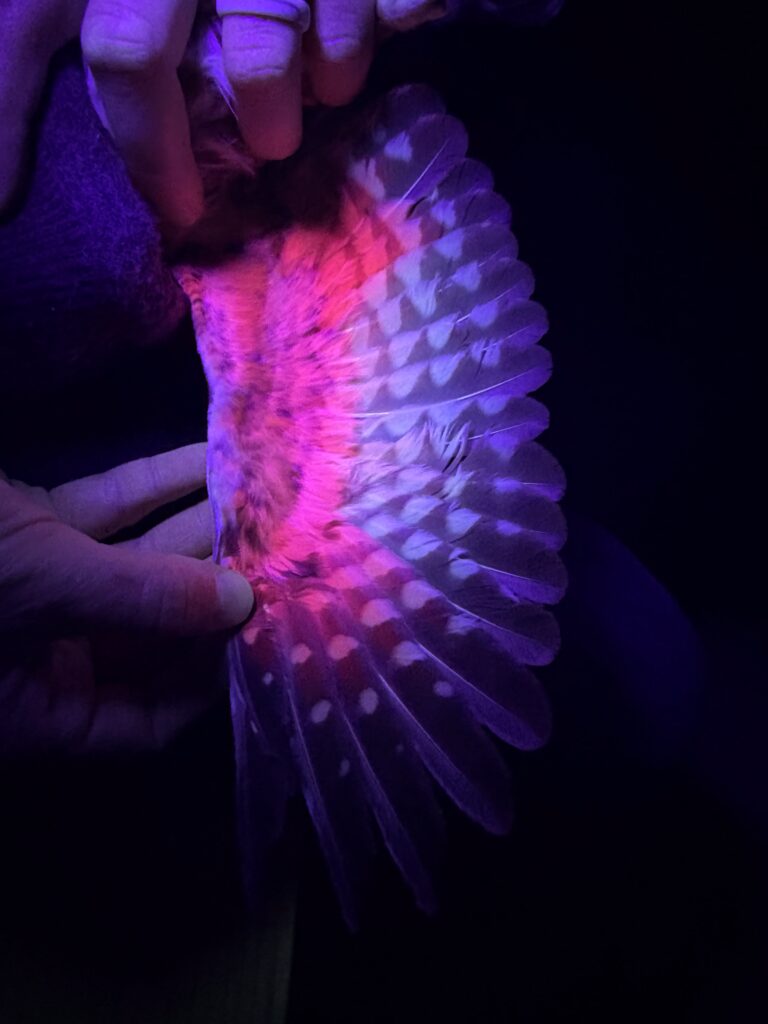
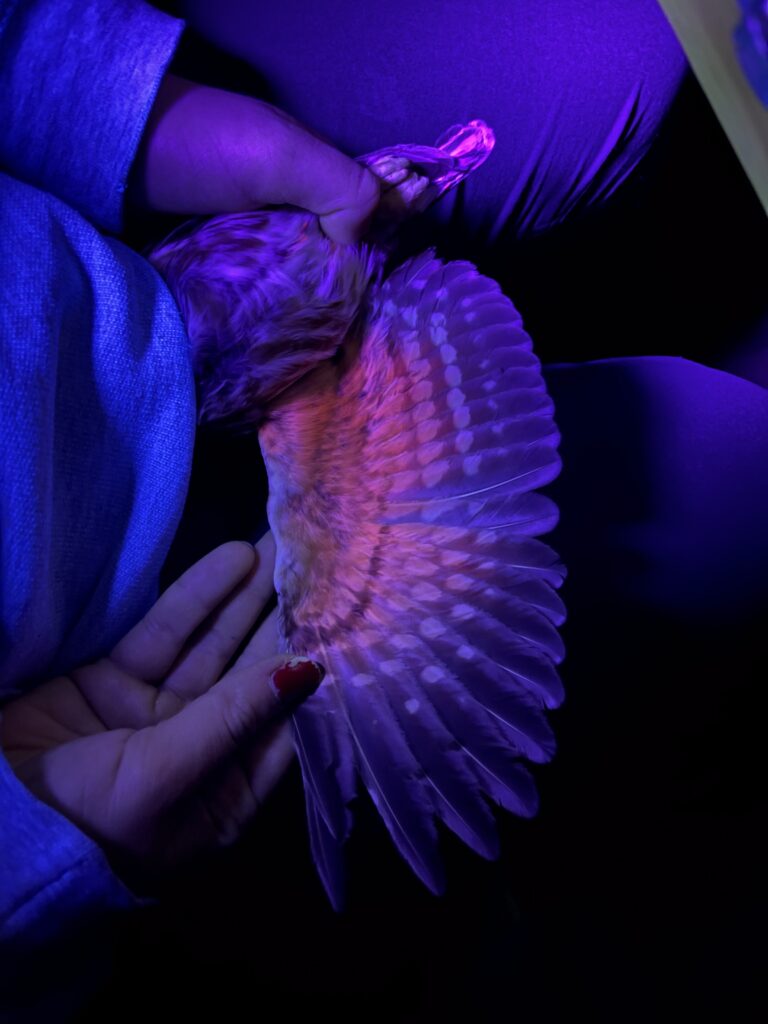
In other exciting news, we captured our second Long-eared Owl of the season this week! Our first LEOW was caught on opening night, which gave us high hopes for the remaining season. Our hopes had been dashed until this handsome male come along. He was captured carrying a vole, so we did accidentally deprive him of his breakfast, but he was young and healthy and sure to catch another.
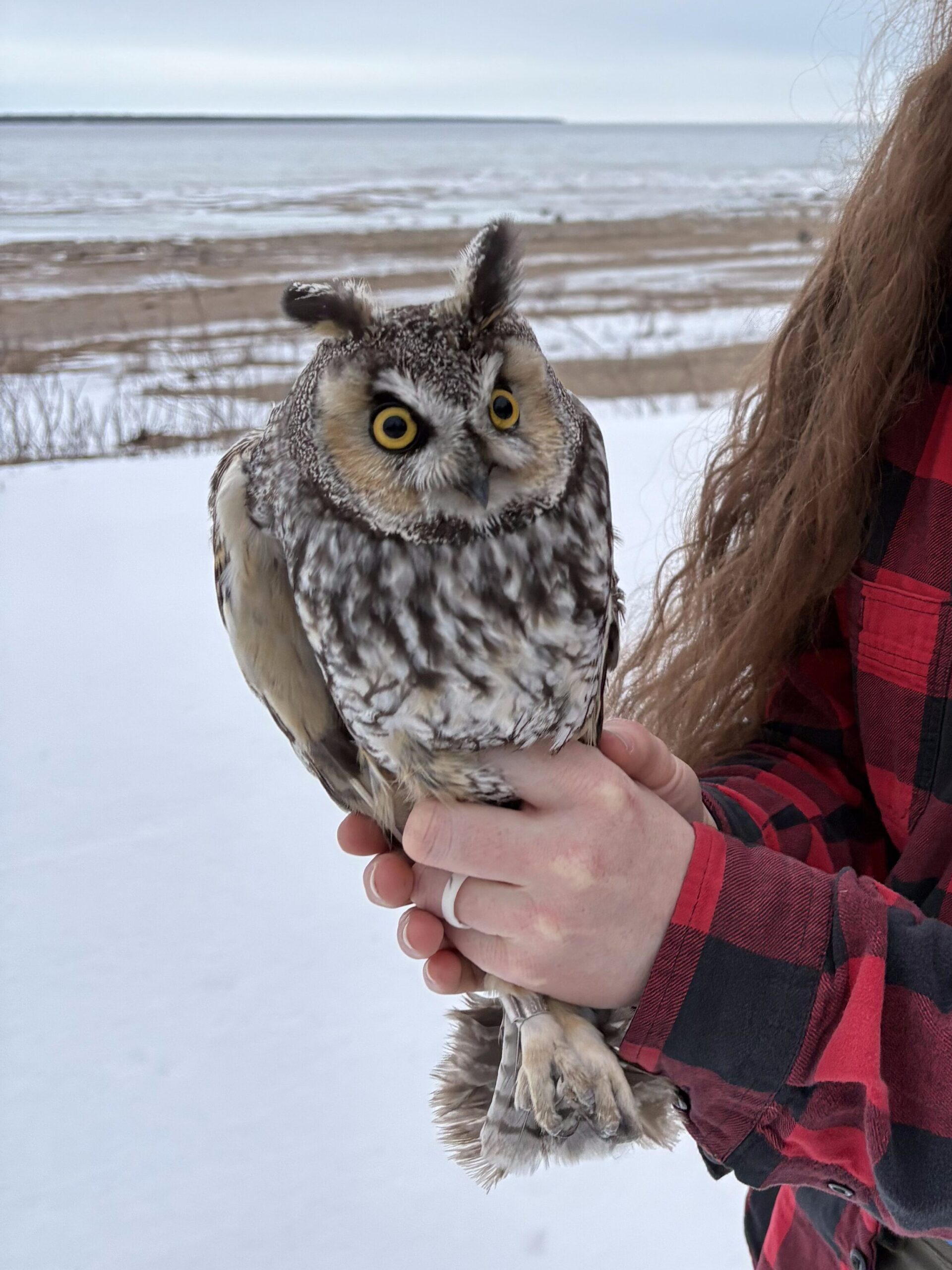
Thats all for this week! Since the ice has melted and the sun has come again, the nights have been getting warmer and we have seen a definite uptick in the volume of owls we catch every night. As the season progresses, we should start to see more LEOW in the nets, and we are crossing our fingers for a special appearance from a Short-eared Owl, as unlikely as that may be. Enjoy the spring migration, and we will see you next week!

